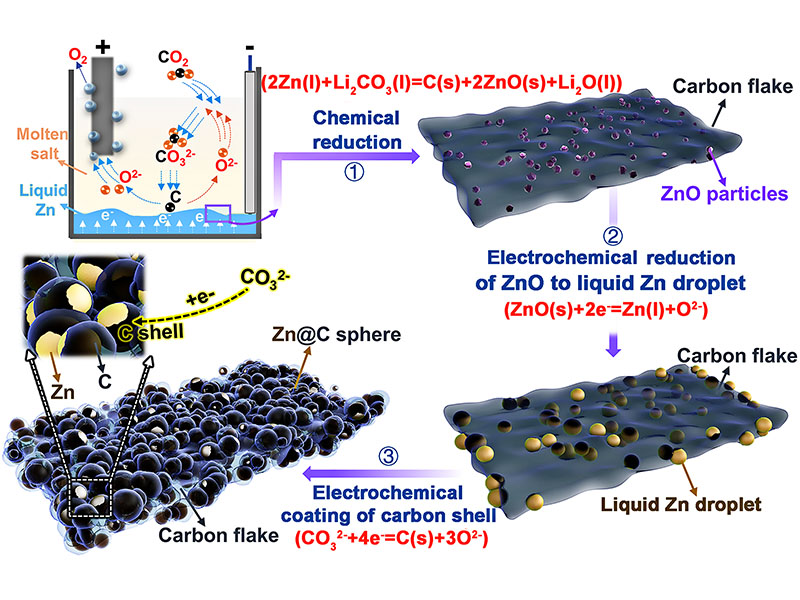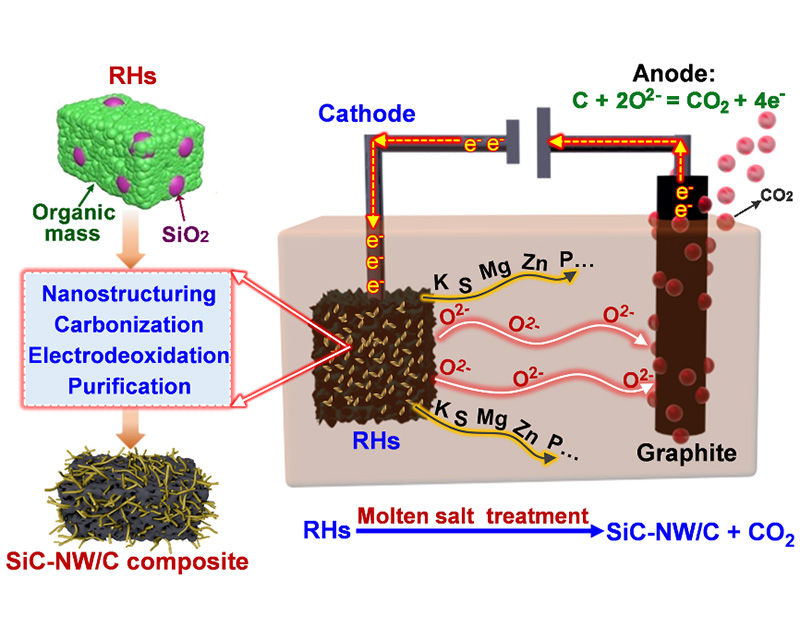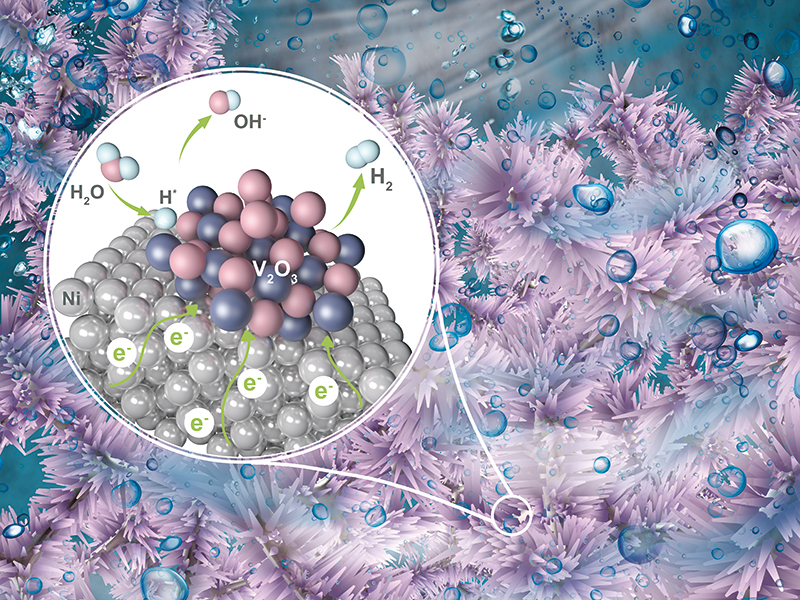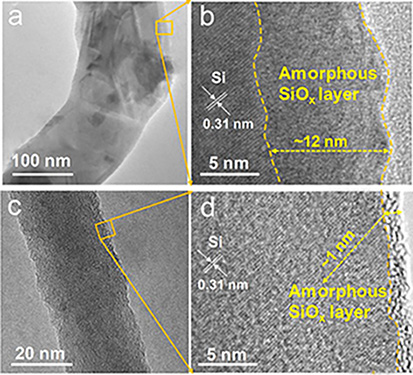Fixation of carbon dioxide (CO2) into advanced energy materials is an ideal protocol to address challenges in energy and environmental sustainability, with the efficiency of CO2 fixation and the functionality of derived materials being the key-enabling factors. Our recent results show that liquid Zn cathode serves as a depolarizer to facilitate the electrochemical reduction of CO2, and also a soft ...
Direct conversion of biomass to advanced energy materials is an ideal solution to relieve climate change. We recently demonstrate a one-step molten salt-assisted electrochemical synthesis strategy for value-added utilization of plant biomass. By using CaCl2-NaCl molten salt as the electrolyte, solid rice husks are directly converted to SiC-nanowire/C hybrid. This nanostructured composite shows much ...
Silicon nanotube (Si-NT) is an ideal architecture for energy and optoelectronic devices. The state-of-the-art preparation of Si-NT via expensive chemical vapor deposition using toxic SiH4/SiCl4 as feedstock retards the large-scale deployment. we recently develop a direct electrochemical method in molten salts for template-free preparation and in-situ surface modification of Si-NT from silica. By simply ...
Implementation of non-precious electrocatalysts is key-enabling for water electrolysis to relieve challenges in energy and environmental sustainability. We recently demonstrate an interfacial confinement of Ni-V2O3 in molten salts to enhance the electrocatalytic hydrogen evolution. Self-supporting Ni-V2O3 electrodes consisting of nanostrip-like V2O3 perpendicularly anchored on Ni meshes are constructed ...
Interaction between iron and nonmetals is a classic topic in industrial iron/steel making and catalysis, in which the modulation of linkage and distribution of iron and nonmetals is a key-enabling factor to develop advanced Fe-based materials. We recently demonstrate a thermoelectrochemical coupling in molten salts to confine microstructure of Fe-N-C. The hybrid of Fe/Fe3C nanoparticles strongly encapsulated ...
Fate of O2- in molten salts plays an important role in electrochemical reduction of oxide ores and electrochemical fixation of CO2. Our recent investigation shows that such two processes can elaborately be connected in serial in molten salts for advanced metallurgy and in-situ CO2 fixation. The delicately designed molten salt electrolyzer consists of molten NaCl-CaCl2-CaO as electrolyte, soluble GeO2 ...
I’m quite proud to share the news that I win the 2019 National Scholarship for Ph.D. candidates.This is my third year at Wuhan university and I have been taking a successive postgraduate and doctoral program of study for doctoral degree since this September. I really appreciate the opportunity to become a member of Lab of Electrometallurgy and Functional Materials. Sincerely thanks for Prof. Xiao’...
Efficient Oxygen Evolution Reaction (OER) is yet a demanding task for practical water splitting. Compared with powdery OER electrocatalysts, binder-free catalyst films directly deposited on conductive substrates are intriguing with respects to more exposed active sites and higher tolerance to violent gas bubbling. Xinxin Liang recently prepared a binder-free film composed of nickel ferrite by anodic ...
To be commercially implemented, electrochemical reduction of silica in molten chlorides for Si extraction needs improvement in terms of productivity and functionality of electrolytic silicon. Wei Weng and Chen Zeng recently propose and demonstrate a one-pot electrochemical preparation of Si/C hybrids via Pyrolysis-Cum-Electrolysis (PCE) of SiO2@Polydopamine (SiO2@PDA) in molten NaCl-CaCl2 at 800 °C....
We have long been bothered by the poor lithium storage capability of the electrolytic silicon nanowires derived from electro-reduction of solid silica in molten salts (a and b). Such a puzzle is now tackled by Dr. Wei Weng via replacing solid silica feedstock with silica dissolved in molten salts. The merits of using dissolved silica precursors are highlighted by direct electrodeposition of thinner ...









